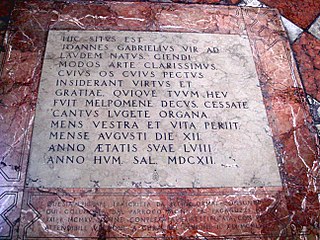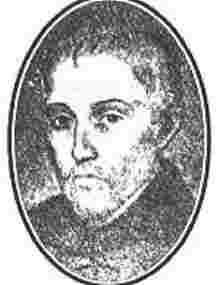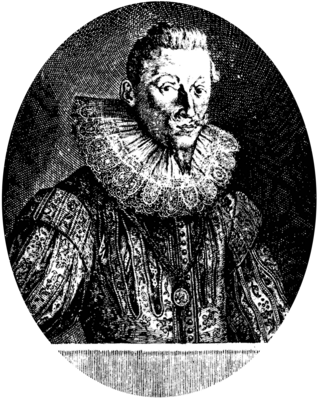
Giovanni Gabrieli was an Italian composer and organist. He was one of the most influential musicians of his time, and represents the culmination of the style of the Venetian School, at the time of the shift from Renaissance to Baroque idioms.

Tomás Luis de Victoria was the most famous Spanish composer of the Renaissance. He stands with Giovanni Pierluigi da Palestrina and Orlande de Lassus as among the principal composers of the late Renaissance, and was "admired above all for the intensity of some of his motets and of his Offices for the Dead and for Holy Week". His surviving oeuvre, unlike that of his colleagues, is almost exclusively sacred and polyphonic vocal music, set to Latin texts. As a Catholic priest, as well as an accomplished organist and singer, his career spanned both Spain and Italy. However, he preferred the life of a composer to that of a performer.
Marc'Antonio Ingegneri was an Italian composer of the late Renaissance. He was born in Verona and died in Cremona. Even though he spent most of his life working in northern Italy, because of his stylistic similarity to Palestrina he is often considered to be a member of the Roman School of polyphonic church music. He is also famous as the teacher of Claudio Monteverdi.
Jean Mouton was a French composer of the Renaissance. He was famous both for his motets, which are among the most refined of the time, and for being the teacher of Adrian Willaert, one of the founders of the Venetian School.
The year 1603 in music involved some significant events.
Pro Cantione Antiqua of London (PCA) is a British choral group which was founded in 1968 by tenor James Griffett, counter-tenor Paul Esswood, and conductor and producer Mark Brown. Their first concert was at St Bartholomew's, Smithfield with Brian Brockless conducting but, from an early stage, they were closely associated with conductor and musicologist Bruno Turner. Arguably, they were the leading British performers of a cappella music, especially early music, prior to the founding of the Tallis Scholars.
Jacob Regnart was a Flemish Renaissance composer. He spent most of his career in Austria and Bohemia, where he wrote both sacred and secular music.
Tiburzio Massaino was an Italian composer.
Vincenzo Ugolini was an Italian composer of the early Baroque era and of the Roman School.
Andreas Hakenberger was a German composer, and worked in Gdańsk beginning in 1608.

Cantiones sacrae, Op. 4, is a collection of forty different pieces of vocal sacred music on Latin texts, composed by Heinrich Schütz and first published in 1625. The pieces have individual numbers 53 to 93 in the Schütz-Werke-Verzeichnis (SWV), the catalogue of his works. The general title Cantiones sacrae was common at the time and was used by many composers, including Palestrina, Byrd and Tallis and Hans Leo Hassler (1591).


